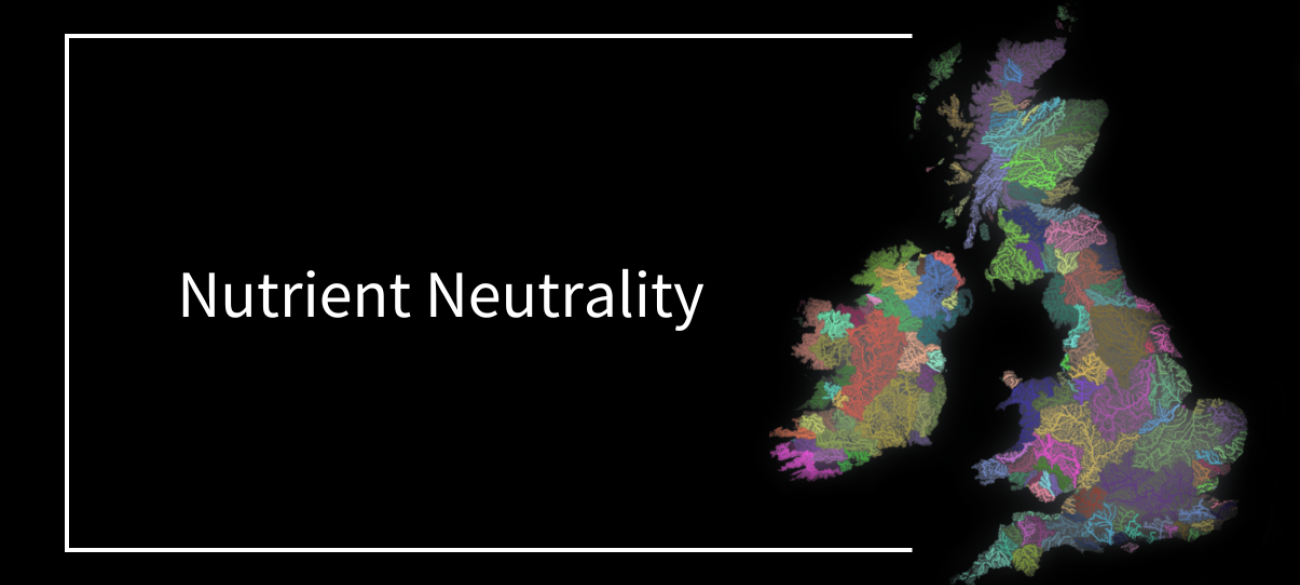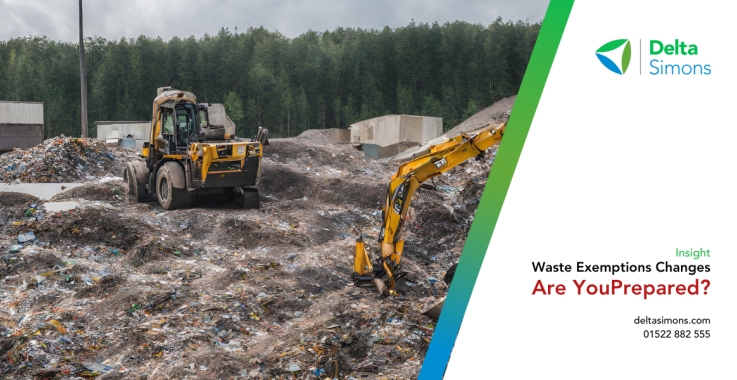Has Nutrient Neutrality Stopped Your Development Program?
24 Oct 2022
Environment
Environmental Planning
Water Services
At the start of the year, Natural England published two advice letters to local authorities as part of their Nutrient Neutrality initiative, stating that planning applications in areas where the effects of development on protected habitats cannot be mitigated would be rejected. Natural England advised, under the Habitats Regulations, that local planning authorities and the Environment Agency must assess the environmental impact of planning applications or local plans. In areas where protected sites are in ‘unfavourable condition’ due to nutrient pollution, Local Planning Authorities can only approve a project if they are certain it will have no negative effect on the protected site.
Late on the 23rd October 2022, BBC Wales published damning news that 100,000 new-build homes could be scrapped across England and Wales, due to the new phosphate rules put forth by Natural Resources Wales (NRW) in conjunction with Nutrient Neutrality. Issued in January 2021, the new phosphate rules are set to create a £16bn hole in the economy whilst campaigners have stated it’s too little too late.
Associate Water Services Consultant Josh Rigby and GIS Lead Ben Blowers detail what is required by Local Authorities to ensure their Planning Applications are successful.
Protection Through Regulation
The UK is home to some of the most sensitive habitats and species in the world. To protect these habitats and species from the impacts of humans, many of our best habitat areas are covered with varying levels of legal protection. At the highest level, international protection applies to areas including Ramsar Sites, Special Protection Areas (SPAs) and Special Areas of Conservation (SACs).
A Site of Special Scientific Interest (SSSI) is protected by UK legislation and is notified under the Wildlife and Countryside Act (1981). SSSI’s are the finest sites for wildlife and natural features, supporting many species, and habitats. Natural England’s objective is to achieve ‘favourable condition’ status for all SSSI’s which means that the SSSI’s habitats and features are in a healthy state and are being conserved by appropriate management.
Nutrient Neutrality
Nutrient pollution is a big environmental issue for many of our most important natural places in the UK. In freshwater habitats and estuaries, increased levels of nutrients (especially nitrogen and phosphorus) can speed up the growth of certain plants, disrupting natural processes and impacting wildlife. This process (called ‘eutrophication’) damages these water-dependent sites and harms the plants and wildlife that are meant to be there. In technical terms, it can put sites in ‘unfavourable condition’. The sources of excess nutrients are very site specific but include sewage treatment works, septic tanks, livestock, arable farming, and industrial processes.
On the 16th of March 2022, Natural England published advice letters to local authorities stating that planning applications in areas where the effects of development on protected habitats cannot be mitigated, would be rejected. This essentially put a complete block on all new housing development applications in areas of the Solent and Norfolk Broads. Natural England has advised, under the Habitats Regulations, that local planning authorities and the Environment Agency must assess the environmental impact of planning applications or local plans. In areas where protected sites are in ‘unfavourable condition’ due to nutrient pollution. Local Planning Authorities can only approve a project if they are certain it will have no negative effect on the protected site.
Impact on development
The Impact of Natural England’s letters has been profound. The letters were issued in two tranches before which there was no consultation with the affected LPA’s. This rendered all overnight accommodation development and/or redevelopment under significant risk of Judicial Review and left the LPA’s with no option but to place a memorandum over all potentially impacted sites until which time they could determine the process by which they could ensure proposed development sites are nutrient neutral. Determining whether a site is nutrient-neutral has been difficult. Calculators, swiftly published off the back of Natural England guidance, proved only to allow developers to quantify the inevitable net increase in nutrient their developments must seek to mitigate but three years later guidance on how to develop mitigation strategies either on or off-site have not been published. Developers are therefore left relying on an ever more stretched pool of consultants to consult with an ever more resource-deficient Natural England over whether a scheme sufficiently proves its efficacy before it is ever constructed and measured.
Developers have been seeking to find alternative measures to provide off-site mitigation for their sites, however, this inevitably targets rewilding of existing and by extension viable farming operations to take land currently used for grazing stock and rewilding it, essentially sanitising it from any use in the future. Farmers and landowners are responding to the market forces and offsetting land is or has become too expensive for many to purchase and this says nothing of the loss of viable agriculture which the country severely needs given current and developing macroeconomic conditions.
This has led to a complete stalling of the planning process in affected areas. The BBC’s latest article published only today highlights that the issue has finally managed to bubble to the top of public consciousness even with the competing political turmoil we are experiencing. The article states, ‘Tougher rules on phosphate river pollution targets have been brought in - but that could affect 100,000 new-build homes in England and Wales.’ This grossly underestimates the problem at hand with many developers actively not investing or massively downsizing their aspirations in the impacted areas.
Our Solution
Delta-Simons Environmental Consultants Ltd (part of the Lucion Group), has guided many of our developer clients through this fraught process. Recently, we are utilising the Portsmouth Model to assist their clients in the housing sector to identify new house-building opportunities by generating nutrient credits by utilising water efficiency measures in the existing housing stock. Reducing the amount of water used by existing housing stock, reduces the strain on local Wastewater Treatment Works (WwTWs). Many WwTWs are running at full or near capacity, as the population and housing increases have grown at a quicker pace than the investment into new WwTWs. This means that in periods of high rainfall the WwTWs have the legal right to discharge untreated wastewater (from houses and drainage networks) into the rivers and sea via Combined Sewer Overflows (CSOs).
Rivers and their Basins
The image accompanying this article is a cartographic representation of rivers and tributaries across the UK and Ireland colour coded by the encompassing drainage basin. A drainage basin is an area of land where all flowing surface water converges to a single point, such as a river mouth, or flows into another body of water, such as a lake or ocean. A basin is separated from adjacent basins by a perimeter. A basin may consist of smaller basins that merge at river confluences, forming a hierarchical pattern.
Other terms for a drainage basin are watershed, catchment area, catchment basin, drainage area, river basin, water basin, and impluvium.
About The Authors
Ben Blowers
GIS Lead - Environmental Planning
Ben is an experienced GIS Lead with over 13 years of experience in planning, environment, and GIS for both the private and public sectors.
Ben uses his GIS and environmental consultancy experience to help clients navigate the complexities of planning policy. Ben has experience working on projects all over the world and has built many advanced mobile and desktop applications for data capture and data presentation.
He has specifically contributed to projects involving Environmental Impact Assessment (EIA), Environmental and Social Impact Assessment (ESIA), Ecological Impact Assessment (EcIA), Habitats Regulations Assessment (HRA), Biodiversity Net Gain (BNG), Flood Risk Assessment (FRA), as well as all of the protected species requirements (surveying and reporting).
E: ben.blowers@deltasimons.com
M: +44 (0)737 6634 071
T: +44 (0)1522 882 555
Linkedin: Ben Blowers
Joshua Rigby
Associate Water Services Consultant - Environmental Planning
Joshua is an Associate with over 14 years of experience in environmental consultancy specialising within the planning and water arena and is the Team Leader for the Water Services business stream. Josh is a flood risk and drainage technical specialist and project manager and has delivered numerous complex flood risk management and drainage projects across the UK.
Josh has undertaken and led the delivery of many detailed Flood Risk Assessments (FRA), Flood Consequences Assessments (FCA), Drainage Strategies, Surface Water Management Plans, Flood Management Plans, culvert studies, and due diligence projects for a range of high-profile public and private clients. Josh leads the completion of the flood risk elements of Environmental Impact Assessments (EIA) including hydrology, hydraulic modelling, drainage, and culvert assessments (existing and proposed), and has vast experience in complex flood risk analysis and mentoring junior staff.
Formerly educated and trained in GeoEnvironmental sciences, Josh has extensive experience in hydraulic assessment including specialised software such as MicroDrainage, ReFH2, GIS using the full suite of ESRI tools as well as MapInfo, QGIS, and Google Earth Pro. Josh has managed many hydraulic modelling projects which require a working knowledge of hydraulic modelling packages such as Flood Modeller Pro (FMP)) TUFLOW), MIKE Flood, InfoWorks ICM, and HEC-RAS.
Josh is responsible for the technical review and authorisation of flood risk and drainage strategy reports prepared by the business and has significant experience in tender proposals, project management, optioneering, policy appraisal and reporting.
Josh leads on Nutrient Neutrality analysis, supporting clients through the process, and providing presentations to all interested parties including statutory consultees.
E: joshua.rigby@deltasimons.com
M: +44(0)777 3044 045
T: +44 (0)1522 882 555
Linkedin: Joshua Rigby




